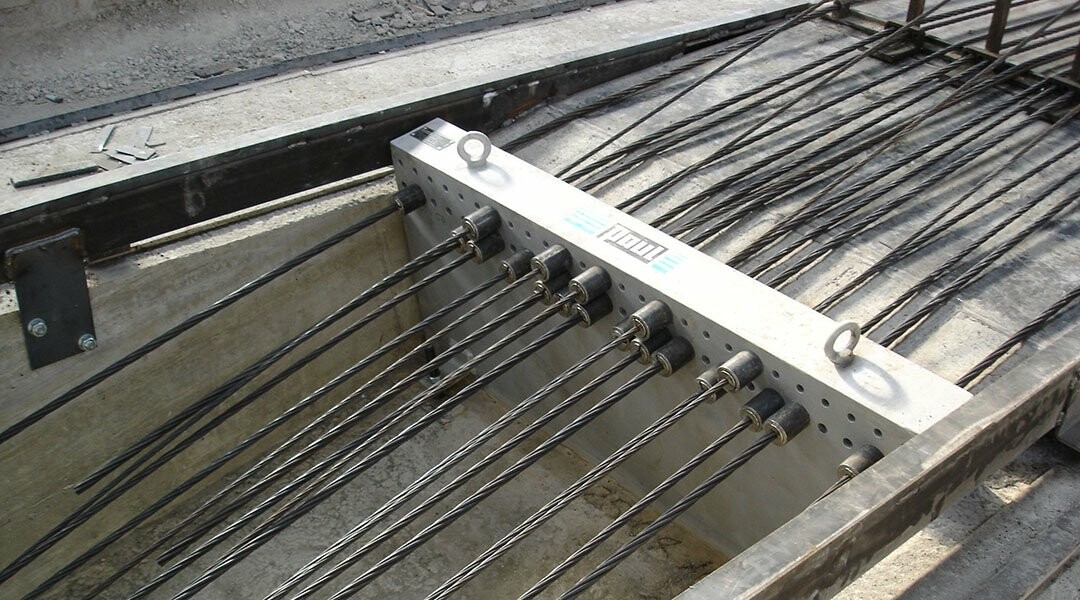During the production of concrete products such as beams, slabs, columns and other structural elements, one of the important stages is the tensioning of reinforcements. This process helps to give concrete products additional strength and stability.
Reinforcement tensioning is carried out using special equipment, including jacks. Reinforcement tensioning jacks are mechanisms that create stressing on the reinforcement, causing it to stretch and create prestressing. This prestressing compensates for the deformation that the concrete product will experience under load in the future.
The process of stressing by hydraulic jack from PAUL a rebar or steel strand begins by placing the rebar or steel strand inside the concrete casting mold. The rebar is pre-prepared by pulling it through special equipment to reach the desired length. The ends of the rebar are then attached to anchors that provide a fulcrum for the jack.
Once the rebar is attached to the anchors, the tensioning process begins. The jacks apply force to the rebar, stretching it and creating the desired tension. Experienced workers monitor the process to ensure that the rebar is tensioned evenly and accurately. When the desired tension level is reached, the rebar is locked in position using clamping anchors.
then the tensioned rebar is the mold poured the concrete, and as the concrete sets, it forms a monolithic structure where the rebar serves as the reinforcing framework to provide strength and load resistance.

The advantages of prestressed reinforcement in the production of concrete products are obvious
It makes it possible to achieve higher strength and stability of concrete structures. Reinforcement tensioning with jacks allows you to create a prestressing that compensates the deformation that occurs in the concrete under load. This significantly increases the load-bearing capacity of concrete products and ensures their durability.
In addition, the stressing of reinforcing bars by hydraulic jack makes rational use of materials and reduces the number of reinforcing bars needed to achieve a given strength. Thanks to prestressing, thinner and lighter reinforcing bars can be used, which in turn reduces material costs and simplifies the installation process.
Another advantage of working with PAUL's hydraulic jack is the ability to control the level of tension and its uniform distribution in the reinforcing structure. This makes it possible to control the quality of production and ensure that the concrete products meet the requirements of the design and safety standards.
However, the process of jacking rebar requires experienced and qualified professionals to ensure proper installation and tension control. Improper execution can lead to deformations, misalignments, or even damage to concrete structures. Therefore, it is important to follow the equipment manufacturer's manuals and instructions and have the necessary training and experience to perform the job.
In conclusion, jacking rebar is an important step in the production of concrete products. It makes it possible to increase the strength, stability and durability of structures, to use materials rationally and to ensure high quality of production. Correct execution of the tensioning process requires qualified specialists and compliance with all necessary standards and recommendations.

